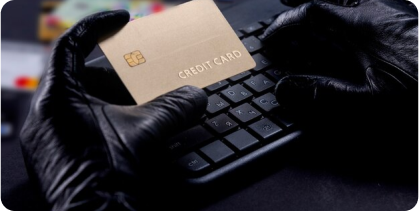Introduction
Credit card fraud is a growing threat, with thousands of Americans falling victim every year. Fraudsters continually devise new schemes to steal credit card information, making it essential to stay informed about these tactics. This comprehensive guide will help you understand the different types of credit card fraud, how to protect yourself, and what to do if you become a victim.
Types of Credit Card Fraud
Card-Not-Present (CNP) Fraud
Scammers steal a cardholder's credit card and personal information to make purchases online or by phone. This type of fraud is challenging to prevent because there is no physical card to examine, and the merchant cannot verify the buyer's identity.
Credit Card Application Fraud*
Criminals use stolen personal information (name, address, birthday, and social security number) to apply for credit cards. This fraud can go undetected until the victim applies for credit themselves or checks their credit report, potentially damaging their credit score.
Account Takeover
After stealing personal information, scammers contact credit card companies pretending to be the cardholder. They change passwords and PIN numbers to take over the account. This fraud is usually detected when the cardholder tries to use their card or log in to their account online.
Credit Card Skimming
Skimmers are devices that steal credit card information from the magnetic strip on the back of the card. Scammers attach them to credit card reader machines in ATMs, retail stores, gas stations, and other businesses. They then sell the information to other scammers or use it themselves to make charges on your card.
Lost or Stolen Cards
One of the most basic credit card fraud schemes involves stealing someone's credit card or using a card that someone has lost. Thieves may also intercept credit cards sent to cardholders in the mail.
Protecting Yourself from Credit Card Fraud
Precautions to Take
- Guard Your Personal Information: Never provide personal or financial information in response to emails, texts, or phone calls. No reputable company will request your personal information this way.
- Avoid Suspicious Card Readers: Look out for readers with sticky keypads or those that seem haphazardly attached to ATMs or gas pumps.
- Shield Your PIN and Account Number: Be cautious when using your card in person, ensuring no one can see your details.
- Secure Your Mail: Don’t let mail sit in your mailbox for long periods. Thieves can steal financial statements that contain your personal information. Consider moving to paperless statements for additional protection.
- Set Up Account Alerts: These can notify you of suspicious transactions, such as charges over a certain dollar amount.
Detecting Credit Card Fraud
Unauthorized or suspicious charges are often the first indication of credit card fraud. Review your monthly statements carefully to ensure there are no charges for things you didn't buy or withdrawals you didn't authorize. Receiving a credit card statement for a card you didn't apply for is another sign of fraud. Many credit card companies proactively detect fraud and may contact cardholders if they detect suspicious activity. However, never provide information on unsolicited phone calls. Instead, hang up and call your credit card company back to verify if there are any problems with your account.
Reporting Credit Card Fraud
Steps to Take
- Contact Your Credit Card Company Immediately: Report the fraudulent transactions or if your card is lost or stolen. Ask them to cancel or suspend your account. They will guide you on how to destroy any existing cards and when you'll receive replacement cards.
- File a Police Report: Contact your local police to file a report. Although local authorities may not be equipped to handle credit card fraud cases, some creditors require police reports as part of their investigation into your fraud claim.
Conclusion
Credit card fraud is a significant concern, but by understanding the different types of fraud and taking preventative measures, you can reduce your risk. Stay vigilant, regularly monitor your statements, and promptly report any suspicious activity. Remember, while solid prevention won't make you immune to fraud, being cautious can significantly reduce your chances of becoming a victim.
FAQs
Immediately contact your credit card company to report the fraud and prevent further unauthorized transactions.
Avoid using ATMs and gas pumps that look tampered with or have loose card readers. Use ATMs in well-lit, secure locations.
Yes, credit cards typically offer better fraud protection and do not give direct access to your bank account.
Report the loss to your credit card issuer immediately to cancel the card and prevent unauthorized use.
Check your statements at least once a month, and consider setting up account alerts for added security.
Most credit card companies offer zero liability protection, meaning you won’t be responsible for unauthorized charges if you report them promptly.
